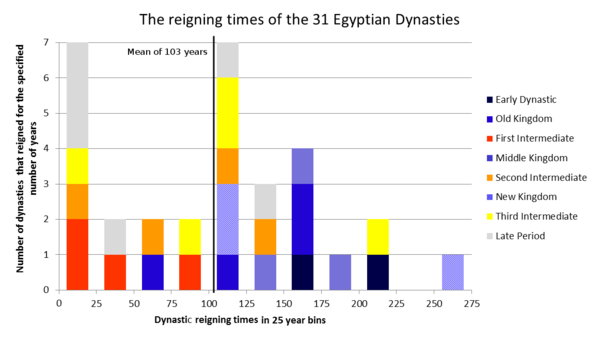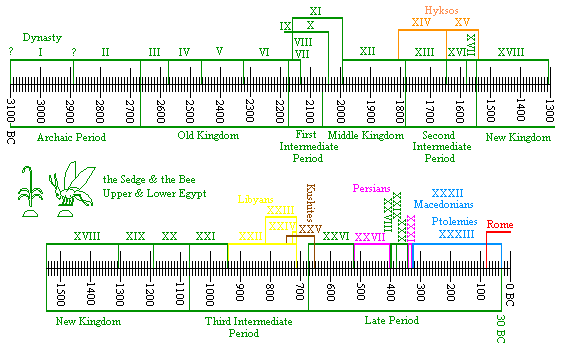Egypt, known for its rich and mysterious history, is home to one of the oldest civilizations in the world. The question of how many Egyptian dynasties there were is a fascinating one, as it reveals a complex tapestry of rulers and eras spanning thousands of years. From the mighty Pharaohs of the Old Kingdom to the conquering forces of Alexander the Great, the story of Egypt is intertwined with the rise and fall of various dynasties.
Over the course of its long history, Egypt witnessed approximately 31 dynasties, each characterized by different ruling families and distinct periods of cultural and political development. These dynasties not only shaped the course of Egypt’s history but also influenced the world beyond its borders. From the construction of monumental pyramids to advancements in art and literature, the legacies of these dynasties continue to captivate and inspire us today.
The history of ancient Egypt is defined by a total of 31 Egyptian dynasties. These dynasties spanned over a period of approximately 3,000 years, from around 3100 BC to 332 BC. Each dynasty represented a new ruling family or lineage that held power over the kingdom. The dynasties played a crucial role in shaping Egypt’s civilization, as they brought political stability, cultural advancements, and architectural achievements.

Contents
The Rich History of Egyptian Dynasties
The ancient civilization of Egypt has a fascinating and complex history spanning over thousands of years. One of the remarkable aspects of Egyptian history is the existence of various dynasties that ruled the land. These dynasties played a significant role in shaping the culture, politics, and societal development of ancient Egypt. In this article, we will explore the question: How many Egyptian dynasties were there?
Early Dynastic Period (Dynasties 1-2)
The Early Dynastic Period marks the beginning of Egyptian civilization and the establishment of a centralized government. This period comprises the first two dynasties, known as Dynasty 1 and Dynasty 2. These dynasties saw the unification of Upper and Lower Egypt under the rule of King Narmer (also known as Menes), who is considered the first pharaoh of Egypt. During this time, the political and administrative structures of ancient Egypt were established, laying the foundation for the subsequent dynasties.
Each dynasty within the Early Dynastic Period saw the rise and fall of different pharaohs, who played a vital role in maintaining order and stability. The pharaohs during this period focused on consolidating their power and expanding their territories. Additionally, the construction of monumental structures such as the Step Pyramid of Djoser in the Third Dynasty demonstrated the architectural achievements of the Early Dynastic Period.
The Early Dynastic Period sets the stage for the subsequent dynasties and provides the historical context for Egypt’s development as a civilization. It laid the groundwork for the religious, cultural, and architectural trends that would continue to evolve throughout the ancient Egyptian dynasties.
Old Kingdom (Dynasties 3-6)
The Old Kingdom is often regarded as the pinnacle of Egyptian civilization, known for its monumental architecture, including the iconic pyramids at Giza. This era comprises Dynasties 3 to 6 and was marked by significant advancements in art, literature, and political administration. The pharaohs of the Old Kingdom, such as Djoser, Sneferu, and Khufu (who commissioned the Great Pyramid of Giza), were revered as god-kings.
During the Old Kingdom, the pharaohs focused on expanding trade networks and establishing diplomatic relations with neighboring regions. They implemented a centralized government system that managed resources, collected taxes, and oversaw construction projects. The pharaohs’ power was reinforced through religion, with the belief that they were intermediaries between the gods and the people.
However, as the Old Kingdom progressed, the centralized control began to weaken, leading to increased regional autonomy and challenges to pharaoh’s authority. This, coupled with environmental factors such as Nile floods and droughts, contributed to the decline of the Old Kingdom and the transition to the Middle Kingdom.
Middle Kingdom (Dynasties 11-13)
The Middle Kingdom is regarded as a period of rejuvenation and stability following the decline of the Old Kingdom. It comprises Dynasties 11 to 13 and witnessed a revival of artistic and literary achievements. Pharaohs such as Mentuhotep II and Amenemhat I took measures to restore centralized control and strengthen the authority of the pharaoh.
During the Middle Kingdom, the pharaohs implemented social and economic reforms to improve the lives of the common people. They focused on agricultural development and irrigation projects to ensure a stable food supply. The construction of fortresses along the Nile served as a defense mechanism against foreign invasions.
The Middle Kingdom also witnessed an expansion of trade, with Egyptian merchants establishing contacts with other civilizations, such as the Minoans in Crete. This era saw a flourishing of literature, including the famous literary work “The Tale of Sinuhe.” However, the Middle Kingdom too eventually succumbed to internal power struggles and invasions from external forces.
New Kingdom (Dynasties 18-20)
The New Kingdom represents a period of imperial expansion and military success for ancient Egypt. It encompasses Dynasties 18 to 20 and is often referred to as the Egyptian Empire. This era saw the reign of powerful pharaohs such as Hatshepsut, Thutmose III, Amenhotep III, and Ramses II.
The New Kingdom marked a shift in Egyptian military strategy, with pharaohs actively engaging in aggressive campaigns to conquer neighboring territories. The Battle of Megiddo, led by Thutmose III, is considered one of the most significant military victories of the time. The construction of grandiose temples, such as the Temple of Amun at Karnak and the Mortuary Temple of Hatshepsut, also flourished during this period.
While the New Kingdom was a period of great prosperity and cultural achievements, it also faced challenges. The reign of Akhenaten and the religious shift towards the worship of Aten created unrest in the empire, and subsequent pharaohs worked to restore stability. External invasions, including the incursions of the Sea Peoples, ultimately led to the decline of the New Kingdom and the beginning of the Third Intermediate Period.
Late Period (Dynasties 25-31)
The Late Period of ancient Egypt witnessed the rule of various dynasties, including Dynasties 25 to 31. This period corresponds to the influx of foreign powers, particularly the Persians and Greeks, into Egypt. The Persians, led by Cambyses II, conquered Egypt in 525 BC and established the Twenty-Seventh Dynasty.
Under Persian rule, the Egyptians struggled to maintain their cultural identity, but several Egyptian pharaohs, like Nectanebo I of the Thirtieth Dynasty, were able to briefly regain independence and rule Egypt. However, the Greek conquest led by Alexander the Great in 332 BC marked the end of the ancient Egyptian dynasties.
The rich and diverse history of Egyptian dynasties spans thousands of years and encompasses numerous periods of prosperity, decline, and cultural influence. From the early unification of Egypt to the imperial power of the New Kingdom and the eventual foreign conquests, the dynasties of ancient Egypt shaped the civilization we marvel at today.

Egyptian Dynasties
Throughout ancient Egyptian history, the country was ruled by several dynasties. These dynasties were periods of time in which power was passed down through a specific family line. The exact number of dynasties in ancient Egypt is a topic of debate among historians and scholars.
Traditionally, scholars have identified 30 dynasties that ruled ancient Egypt, starting from the Early Dynastic Period and ending with the last native Egyptian dynasty, the Thirtieth Dynasty. This traditional view is based on the Aegyptiaca, a historical account written by the ancient Egyptian priest Manetho in the third century BCE.
However, some historians argue that the number of dynasties can vary depending on the criteria used. For example, different scholars may count intermediate periods or short-lived dynasties as separate entities. Additionally, the division of dynasties is complex due to overlapping and co-regencies.
Regardless of the exact number, the dynasties of ancient Egypt played a crucial role in shaping the country’s history, religion, and culture. Each dynasty left its mark on Egypt, building monuments, temples, and palaces that still stand today as a testament to their power and influence.
Key Takeaways – How Many Egyptian Dynasties Were There
- The number of Egyptian dynasties is debated among historians.
- The traditional view suggests there were 30 pharaonic dynasties.
- Each dynasty represented a period of rule by a single family.
- The earliest dynasties originated around 3100 BCE.
- The last major dynasty, the 30th, ended in 343 BCE.
Frequently Asked Questions
In this section, we will answer some commonly asked questions about the number of Egyptian dynasties.
1. How many Egyptian dynasties existed?
There were 31 Egyptian dynasties that ruled throughout the history of ancient Egypt.
Each dynasty represented a new line of rulers who came to power by various means, including military conquest, marriage, and inheritance. These dynasties spanned over thousands of years, from approximately 3100 BCE to 332 BCE.
2. How were the Egyptian dynasties classified?
The Egyptian dynasties were primarily classified based on the existence of a pharaoh and their lineage. The first dynasty was established by Pharaoh Narmer, who unified Upper and Lower Egypt. The subsequent dynasties continued the tradition of royal lineage and succession.
Furthermore, historians classify these dynasties into three main periods: the Old Kingdom, the Middle Kingdom, and the New Kingdom. Each of these periods was characterized by different political, cultural, and architectural developments.
3. How long did a typical Egyptian dynasty last?
The length of each Egyptian dynasty varied considerably. Some dynasties lasted for several generations, spanning centuries, while others were shorter in duration. The average duration of a dynasty was around 100 to 200 years. However, the length of rule also depended on factors such as political stability, military conflicts, and internal disputes.
4. Which dynasty is considered the most famous in ancient Egypt?
The New Kingdom, specifically the 18th dynasty, is often regarded as the most famous and influential dynasty in ancient Egypt. This period saw the rise of powerful pharaohs like Hatshepsut, Thutmose III, and Akhenaten.
The 18th dynasty witnessed significant military conquests, immense wealth, and cultural achievements like the construction of magnificent temples and tombs, such as the Karnak Temple and the Valley of the Kings.
5. Did any dynasties rule ancient Egypt for an extended period?
Yes, one dynasty that ruled ancient Egypt for an extended period was the 30th dynasty. This dynasty, known as the “Late Period,” was based in the city of Sais and was of Libyan descent.
The 30th dynasty ruled for over 170 years, from 380 BCE to 343 BCE. They were known for their political and military conflicts with other powers in the region, such as the Persians and Greeks.
Egyptian Pharaohs Family Tree | Dynasties 1 to 31
In conclusion, there were a total of 31 Egyptian dynasties that ruled over Egypt throughout its ancient history. These dynasties spanned over a period of approximately 3,000 years, from around 3100 BCE to 30 BCE. Each dynasty was characterized by a different set of pharaohs and marked significant political, cultural, and artistic developments.
The Egyptian dynasties played a crucial role in shaping the civilization of ancient Egypt. They established the centralized power of the pharaohs, constructed grandiose monuments such as the pyramids, and contributed to the development of hieroglyphic writing, art, and religious practices. Understanding the chronology and key aspects of each dynasty provides valuable insights into the rich and fascinating history of ancient Egypt.